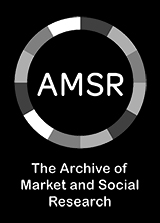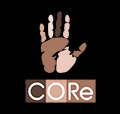The Science of Behaviour Change
To book for someone else click here.
Online course
Members
£350 + VAT
Non-Members
£525 + VAT
Company partners
£375 + VAT
Contact us for In Company price/rates
Please let us know if you have any accessibility requirements ahead of the event
Since 'Nudge, Predictably Irrational', and 'Thinking, Fast and Slow' became best sellers over a decade ago, behavioural science has rapidly grown in popularity and continues to be a buzz topic as well growing in importance for research and insight. We’re learning more about human behaviour and learning it faster than ever before – the countless behavioural models, biases, and heuristics.
You can be forgiven for suffering from information overload and finding it difficult to put the science into practice!
This on-demand course is designed for anyone involved or interested in understanding human behaviour from across research, insight, marketing communicationss, brand and product/service design. The Science of Behaviour Change on-demand course will help you make sense of the theory as well as give you step-by-step templates to apply the latest behavioural science at work.
Course outcomes:
- Get up to speed on key behavioural science insights and concepts
- Learn about common behavioural biases and heuristics
- Explore the implications of behavioural science for research and design
- Apply the theory using practical behaviour change models, tools, and templates
- Make breakthroughs – identify barriers and opportunities for behaviour change
- Design measurable and effective behavioural interventions
- Create feedback loops to test, iterate, and scale interventions in the real world
- Get inspired and learn lessons from real-world behaviour change case studies
The Science of Behaviour Change is delivered in 5 easy-to-follow modules:
Module 1 – Key behavioural science insights and concepts
This introductory module explains rational choice theory / utility maximisation, how our understanding of human behaviour is often based on assumptions that people consciously weigh up all the available information. There are a range of examples and exercises which highlight our own assumptions as well as giving the history and background behavioural enlightenment. Understand how we make decisions and the process behind them, including gut feeling (system 1) vs conscious thought (system 2).
Module 2 – Common behavioural biases and heuristics
Learn about the short cuts we make in decision making, choice overload and how our decisions are often guided by social proof or being liked/accepted as well as maintaining the status quo. Understand about framing questions, loss aversion, hyperbolic discounting, the ambiguity effect and mental availability. This second module covers hot and cold states and reveals that there are over 170 behavioural biases and heuristics.
Module 3 – Behavioural design and defining behaviours
The implications for research and design are covered in this third module looking at how we can better empathise and understand people’s biases as well as how we can design comms, products and services to work with people’s cognitive beliefs. Learn how to make desired behaviours easier to do as well as understand the five phases of behavioural design (define, map, diagnosis, design, validate). Also learn how to define behaviours and achieve your desired outcome.
Module 4 – Behavioural mapping and diagnosis
Understand behavioural mapping with decision and action. Learn the what, when, where and how long each decision and action happens. See how a behavioural map can help close the empathy gap, understand early indication of mental and physical effort required and highlight potential intention-action gaps. Learning by doing by completing the second phase of the behavioural design method.
Module 5 – Behavioural intervention design, validation and next steps
Learn how to identify key behavioural barriers and opportunities for desired behaviour change overcoming the 3 key barriers – mindlessness, motivation and effort. Do a behavioural diagnosis to capture context, make breakthroughs and be insight led making design interventions based on validated insights. Understand the problems with traditional research basis questions. Learn about behavioural research methods to uncover the behavioural biases, heuristics and emotions in context. Plus see how to do a behavioural diagnosis.
Trainer – Ben Buckby
Benjamin Buckby is the founder of peasee, an award-winning behavioural designer, helping companies make it easier for their customers and employees to make better choices. He has over 12 years' experience applying behavioural science to design effortless experiences, communications, products, and services for the organisations including HSBC, Telefonica, Centrica, AstraZeneca, and Co-op. In this time, Benjamin has won a Nudge Award (the world's first behaviour change awards), been voted Most Inspiring Agency Speaker Finalist at the AURAs, shortlisted for the AQR Qualitative Excellence Award, and chaired the MRS Behavioural Science Summit for two years running. Ben regularly delivers training in applied behavioural science and behaviour change on behalf of MRS.
Additional Information
To book for someone else click here.
Online course
Members
£350 + VAT
Non-Members
£525 + VAT
Company partners
£375 + VAT
Contact us for In Company price/rates
Please let us know if you have any accessibility requirements ahead of the event
Get the latest MRS news
Our newsletters cover the latest MRS events, policy updates and research news.










